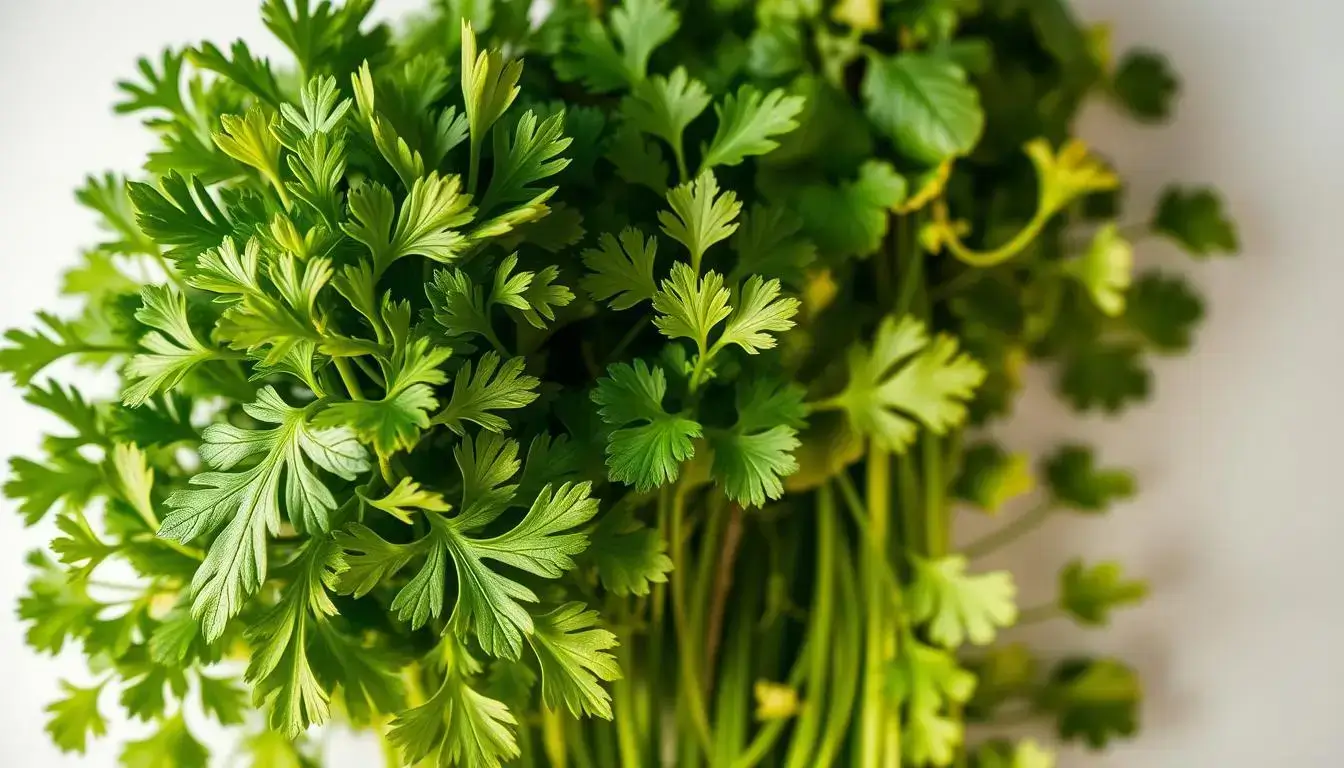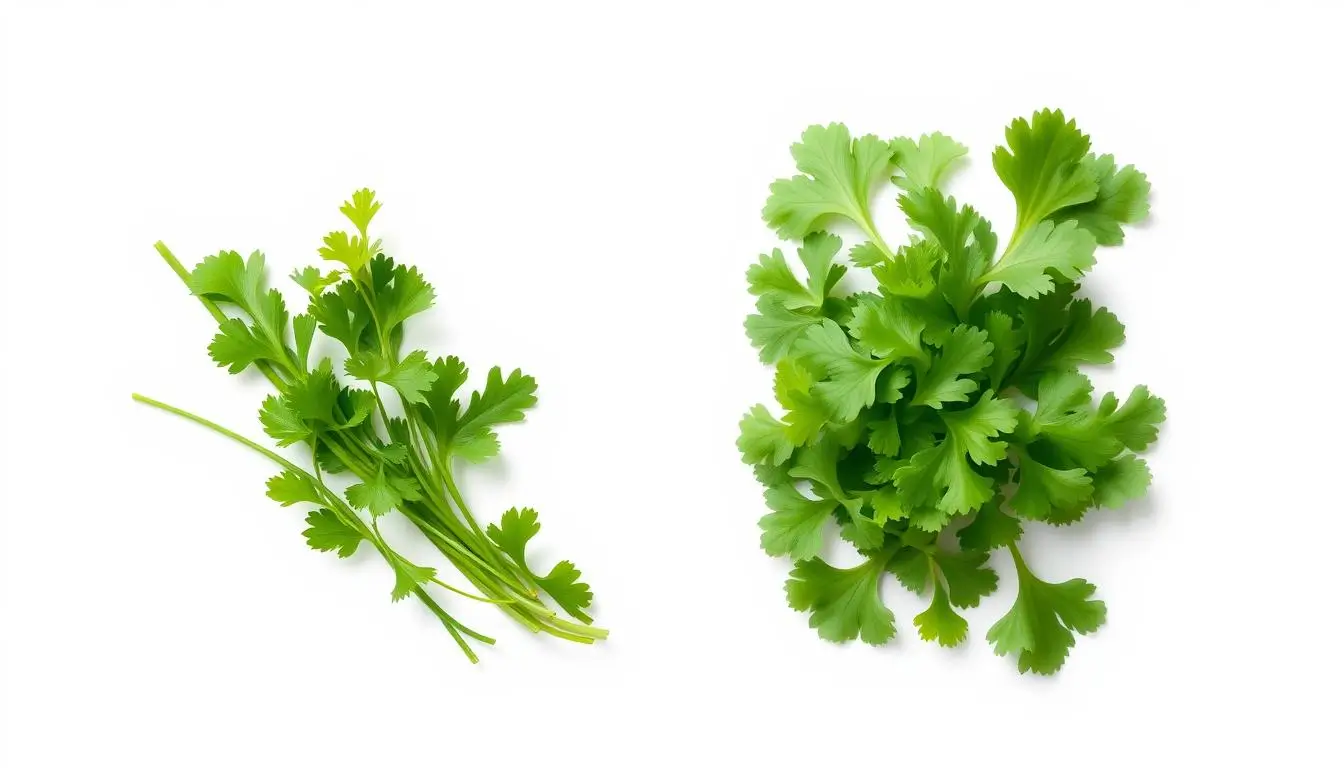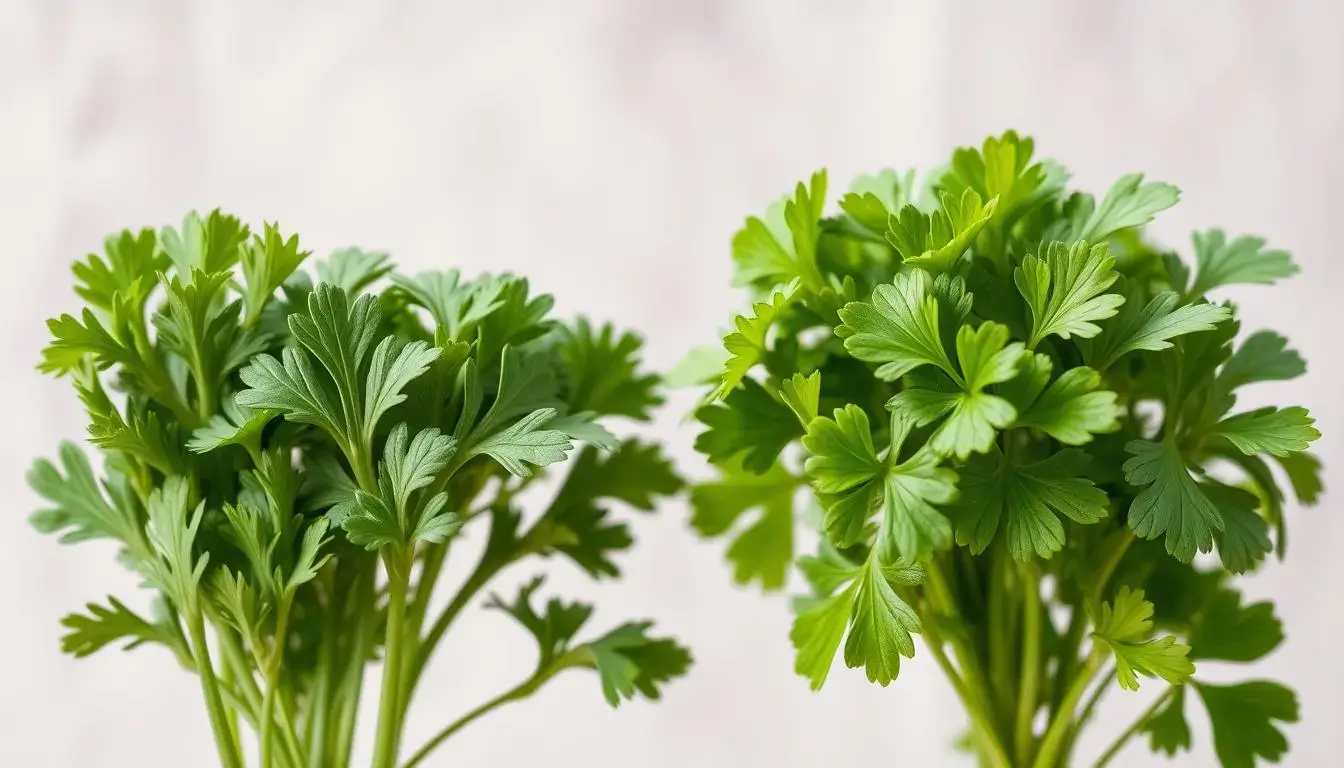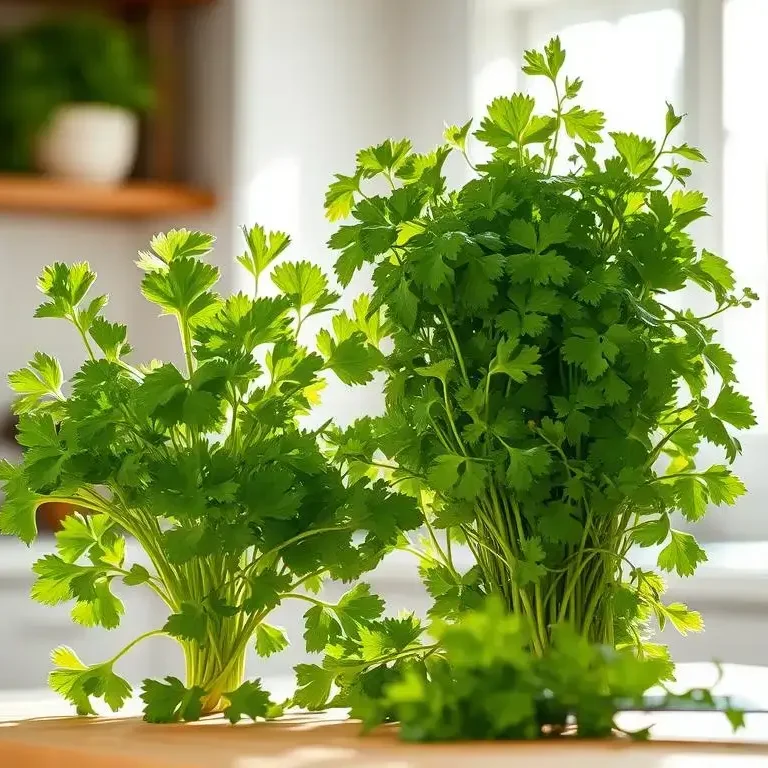Are you confused about the differences between culantro vs cilantro? You’re not alone. Many cooks struggle to distinguish between these two herbs, which are often used in similar dishes but have distinct characteristics.
This comprehensive comparison will help you understand the differences between culantro vs cilantro, including their origins, physical characteristics, and uses in cooking. By the end of this article, you’ll be able to confidently choose between these herbs for your recipes.
Key Takeaways
- Understand the differences between culantro vs cilantro
- Learn how to identify each herb
- Discover their nutritional benefits
- Find out how to store them for maximum freshness
- Confidently use culantro vs cilantro in your cooking
Understanding Culantro vs Cilantro: Origins and Background
As you explore the world of herbs, understanding the nuances between culantro vs cilantro becomes essential. Both herbs are staples in various cuisines, yet they have distinct characteristics that are worth exploring.
Botanical Classification and Plant Families
Culantro, also known as Eryngium foetidum, belongs to the Apiaceae family, the same family as cilantro (Coriandrum sativum). Despite their familial relation, they exhibit different properties and uses in cooking. Culantro is known for its long, serrated leaves, which distinguish it from cilantro’s delicate, lacy foliage.
| Herb | Botanical Name | Family |
| Culantro | Eryngium foetidum | Apiaceae |
| Cilantro | Coriandrum sativum | Apiaceae |
Historical Uses Across Different Cultures
Culantro vs cilantro have been used across various cultures for centuries. In Asian and Latin American cuisines, culantro is valued for its robust flavor, often used in soups and marinades. Cilantro, on the other hand, is a staple in Mexican and Indian cooking, used to add freshness to salsas, salads, and chutneys.
Global Popularity and Regional Names
Both herbs enjoy global popularity, though they are known by different names in various regions. Culantro is often referred to as “sawtooth herb” or “long coriander,” while cilantro is sometimes called “coriander leaves” or “Chinese parsley.” Their diverse names reflect their widespread use and cultural significance.
Physical Characteristics: How to Identify Each Herb

To avoid confusion between culantro vs cilantro, it’s essential to examine their physical characteristics closely. Understanding these differences will help you choose the right herb for your recipes.
Leaf Structure and Appearance Differences
Culantro vs cilantro have distinct leaf structures that set them apart. Culantro leaves are longer and more serrated, with a coarser texture compared to cilantro. In contrast, cilantro leaves are typically more delicate and lacy, with a finer texture.
The growing habits of culantro vs cilantro also differ significantly. Culantro tends to grow more upright, with longer stems, whereas cilantro is generally shorter and more sprawling. Understanding these growth patterns can help in identifying the plants in a garden or pot.
Visual Identification Tips for Shoppers
When shopping for these herbs, look for the distinct leaf shapes and colors. Culantro leaves are typically a deeper green and more robust, while cilantro leaves are lighter and more fragile. Checking the texture and appearance can help ensure you’re purchasing the correct herb.
| Characteristic | Culantro | Cilantro |
| Leaf Structure | Longer, serrated, coarser texture | Delicate, lacy, finer texture |
| Growing Habit | Upright, longer stems | Shorter, more sprawling |
| Leaf Color | Deeper green | Lighter green |
Culantro vs Cilantro: Flavor Profile Comparison

Culantro vs cilantro, though similar in appearance, have distinct flavor profiles that can significantly impact your recipes. Understanding these differences is crucial for making informed decisions in your cooking.
Cilantro’s Distinctive Taste and Aroma
Cilantro is known for its fresh, citrusy flavor and aroma. The leaves contain aldehyde compounds that give it a distinct taste, often described as bright and zesty. This characteristic makes cilantro a popular choice for salsas, salads, and other dishes where a fresh flavor is desired.
Culantro’s Intensity and Unique Flavor Notes
Culantro, on the other hand, has a more intense, earthy flavor compared to cilantro. Its taste is often described as a combination of cilantro and citrus with a hint of bitterness. This robust flavor profile makes culantro ideal for dishes that require a deeper herbal note, such as in certain Latin American and Asian recipes.
The Genetic Factor in Taste Perception
Interestingly, the perception of cilantro’s taste can be influenced by genetic factors. Some people may experience a soapy or metallic taste due to a genetic variation that affects their ability to perceive certain aldehydes. While this is more commonly discussed in relation to cilantro, it’s worth noting that individual perceptions of both herbs can vary widely.
| Herb | Flavor Profile | Common Uses |
| Cilantro | Fresh, citrusy | Salsas, salads, Mexican dishes |
| Culantro | Earthy, intense | Latin American dishes, soups, stews |
By understanding the unique flavor characteristics of culantro vs cilantro, you can make more informed choices about which herb to use in your cooking, enhancing the overall flavor of your dishes.
Culinary Applications and Best Uses
Exploring the culinary uses of culantro vs cilantro reveals their unique contributions to various recipes. You can use these herbs in a variety of dishes, from traditional meals to modern fusion cuisine. Understanding their applications can help you make the most of their flavors.
Traditional Recipes Featuring Culantro
Culantro is a staple in many Latin American and Asian dishes. It’s often used in soups, stews, and sauces. For example, in Puerto Rican cuisine, culantro is a key ingredient in sofrito, a blend of herbs and spices used to flavor many dishes. You can also find culantro used in Mexican and Caribbean recipes, adding depth and warmth to various meals. If you’re looking for culantro seeds or culantro recao seeds to grow your own, many online retailers and specialty stores carry them.
Popular Dishes Using Cilantro
Cilantro is widely used in Mexican, Indian, and Asian cuisines. It’s a key ingredient in salsas, salads, and as a garnish for various dishes. You can find cilantro used in popular recipes like salsa verde and Indian chutneys. Its fresh flavor complements a wide range of ingredients, making it a versatile herb in many kitchens. You might have seen cilantro used in salads at your local restaurant or farmer’s market, such as those in culantro ann arbor areas.
Substitution Methods and Ratios
When substituting culantro for cilantro or vice versa, it’s essential to understand their different flavor profiles. Generally, you can substitute them in a 1:1 ratio, but you may need to adjust based on personal taste. For example, if you’re substituting culantro for cilantro, start with a smaller amount due to culantro’s stronger flavor, and adjust to taste.
| Dish Type | Culantro | Cilantro |
| Soups and Stews | Often used for depth | Rarely used |
| Salsas and Salads | Less common, but used in some recipes | Frequently used for freshness |
| Sauces and Marinades | Used for its robust flavor | Used for its bright, citrusy flavor |
Nutritional Benefits and Health Properties
Beyond their culinary uses, culantro and cilantro offer a range of nutritional benefits that can contribute to a healthy diet. Both herbs are rich in essential nutrients and have been used in traditional medicine for their health properties.
Essential Nutrients and Antioxidant Content
Culantro and cilantro are both rich in vitamins A and K, and they contain significant amounts of antioxidants. These nutrients can help protect against oxidative stress and inflammation in the body. Incorporating these herbs into your diet can enhance your nutrient intake.
Medicinal Uses and Traditional Remedies
Traditionally, both culantro and cilantro have been used to treat various health issues. Cilantro, for example, has been used to aid digestion and reduce anxiety. Culantro has been utilized for its anti-inflammatory properties. These traditional uses highlight the potential health benefits of these herbs.
Modern Research on Health Benefits
Recent studies have begun to validate some of the traditional uses of culantro and cilantro. Research has shown that cilantro may have antimicrobial properties, while culantro has been studied for its potential to reduce cholesterol levels. Continued research is needed to fully understand their health benefits.
Availability and Storage in the United States

To make the most of these herbs, it’s essential to know their availability and how to store them properly. Both culantro and cilantro are used in various cuisines, but their availability can vary significantly depending on your location.
Where to Find Culantro vs Cilantro
You can typically find cilantro in most supermarkets across the United States, as it is widely used in Mexican and Asian cuisines. However, culantro might be harder to find in regular grocery stores, especially outside of areas with large Latin American or Asian populations. You may need to visit specialty stores or ethnic markets that cater to these communities. Some cities also have farmers’ markets where you can find both herbs, particularly during peak growing seasons.
For those who cannot find these herbs in local stores, there are also online options. Many online grocery stores and specialty food retailers now offer delivery services, making it easier to get your hands on culantro and cilantro.
Seasonal Availability and Pricing
The availability and pricing of culantro and cilantro can fluctuate based on the season. Generally, cilantro is available year-round in many parts of the country, thanks to indoor growing and importation. Culantro, being more sensitive to frost, may have a more limited seasonal availability in colder climates. Prices tend to be higher when the herbs are out of season or during periods of high demand.
Storage Techniques for Maximum Freshness
To keep culantro and cilantro fresh for as long as possible, proper storage is key. You can store them in the refrigerator, wrapped loosely in a damp paper towel and placed in a plastic bag. This method helps maintain humidity and keeps the herbs fresh for several days. Alternatively, you can treat them like cut flowers by placing the stems in a jar of water, covering the leaves with a plastic bag, and refrigerating them.
For longer-term storage, consider freezing or drying the herbs. Freezing preserves the flavor and aroma well, while drying is a good option if you want to store them for an extended period. Simply chop the herbs, spread them on a baking sheet, and freeze. Once frozen, transfer them to airtight containers or freezer bags.
Conclusion: Choosing Between Culantro vs Cilantro
You now understand the distinct qualities of culantro and cilantro, including their origins, physical characteristics, flavor profiles, and culinary applications. The comparison between culantro and cilantro shows that while both herbs are used in cooking, they differ in intensity and specific uses. Resolving the culantro cilantro confusion allows you to confidently select the right herb for your recipes, enhancing your culinary creations.
By recognizing the unique benefits and characteristics of each herb, you can explore new flavors and expand your gastronomic experiences. Whether you’re preparing traditional dishes or experimenting with new recipes, your knowledge of culantro and cilantro will help you make informed decisions.

